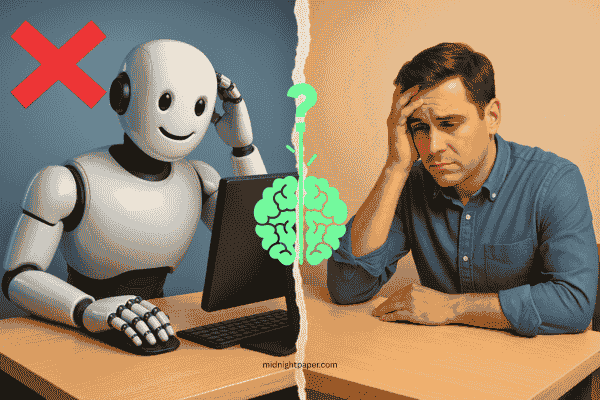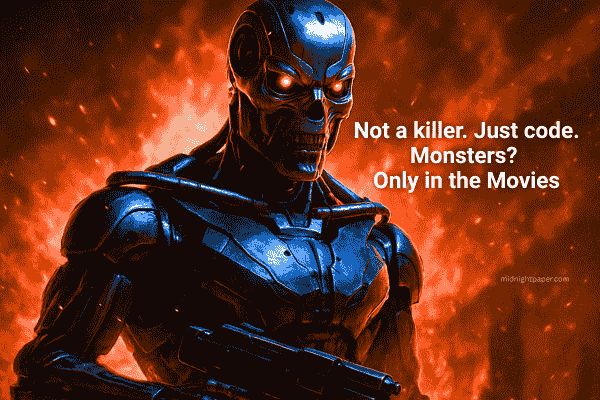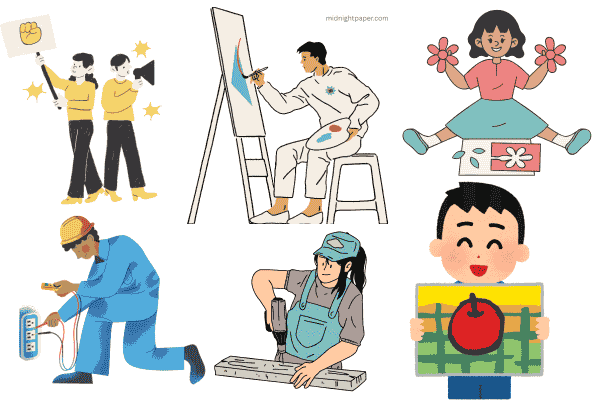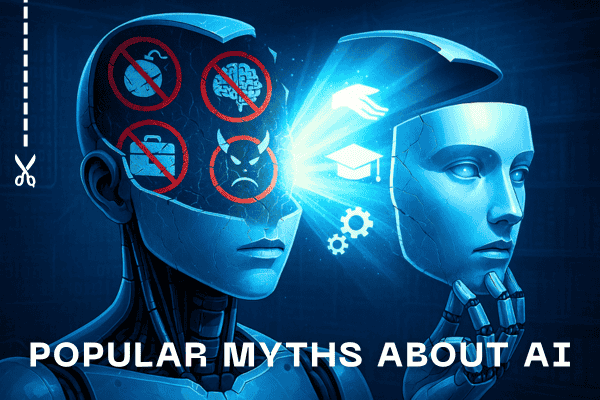When it comes to myths about AI, many theories may seem unbelievable, but some are based on reality. Given the hype surrounding the technology, it can be challenging to determine the true disruptive power of AI in society.
Artificial Intelligence (AI) has become one of the most talked-about and important topics of the 21st century. From virtual assistants to autonomous vehicles and smart healthcare, AI is reshaping every platform at an unprecedented pace.
When we examine the science fiction of Artificial Intelligence and robots being endowed with superpowers, as depicted in robotic movies, combined with the current use of AI technology, it becomes clear that such a thing is not possible.
In this article, we will delve deeper into some popular myths about Artificial Intelligence. We will analyze the real-world implications and possibilities of Artificial Intelligence, uncovering the truth behind the hype surrounding it.
Artificial Intelligence: Fact vs. Fiction
Today, artificial intelligence is a computer program that mimics human thinking. These AI programs are built with a narrow goal, which does not allow them to do anything outside of their assigned task. These programs are designed solely to perform a specific task with accuracy and speed.
There are also some algorithms that are designed to improve themselves through learning. This type of artificial intelligence program is called a machine learning algorithm. It becomes able to solve problems faster and more accurately with progressive refinement.
For example, when a child learns arithmetic in a class and later goes to a store, he can easily use that knowledge to pay for the goods. Here, the knowledge is carried over directly from previous problems, allowing a person to easily solve the problem without having to relearn the method.
Knowledge can also be transferred to AI using a concept known as transfer learning. One of the things that separates human intelligence from artificial intelligence is transfer learning. Currently, many complex cognitive processes cannot be replicated in an AI setting. This means that all these programs created today are narrow AI programs designed to perform a specific task.
Learn More: Artificial Intelligence- Beginner-Friendly Guide 2025
Common Myths About AI
Movies like ‘Robot 2.0‘, ‘Terminator‘, and ‘Eagle Eye‘ have transformed villainous Artificial Intelligence into pop culture. At first, science fiction writers viewed it as a main villain. Now, it is seen as the key to the next big revolution.
Although several representations show AI as omnipotent, today’s AI is just a collection of complex computer programs. That is, most of the myths about AI taking over the world are not yet possible with current technology. Let’s know about these myths in detail.
Myth 1: Robots or AI Will Take Your Job – Or Will They?

First of all, it’s good to say that AI won’t be able to take your job. AI spokespersons argue that artificial intelligence will do such a high-quality job for companies that it will become too expensive to hire human labor. This will lead to mass unemployment as AI will take over the same jobs as humans and do them much faster.
It is essential to recognize that AI has the potential to automate specific tasks, particularly those that are repetitive or data-intensive. According to the World Economic Forum, AI is expected to displace around 85 million jobs by 2025; however, this should not be a cause for discouragement, as AI is also anticipated to create 97 million new jobs.
AI will be used as a tool, but this new medium could replace some low-level jobs. That is, workers will need to up-skill themselves, in simple terms, learning how to do things using artificial intelligence.
Myth 2: “AI Thinks Like Us” – The Truth Behind Machine Minds
One of the biggest misconceptions about artificial intelligence that has been debunked is that AI systems can think like humans.
In reality, AI is built on algorithms and statistical models that have no emotion, self-awareness, or personal experience. Even ChatGPT or automatic driving software is based on logic and learned patterns. AI has no real understanding of its own.
Myth 3: AI will be able to improve itself without human knowledge
This theory suggests that AI may eventually reach a point where it becomes very challenging for humans to control or stop its development. Researchers have been exploring the potential of AI to learn not only from data but also from the outcomes of its actions. However, progress in this field has been slow, leading to recent advancements in unsupervised machine learning.
An AI can’t evolve consciousness and feelings, let alone rebel against humanity. AI algorithms cannot develop beyond their limited capabilities. They use computing power to solve complex problems.
Learn More: AI Evolution– From Turing’s Dream to 2025’s Genius
Myth 4: AI Understands Human Language Like a Person – But It Doesn’t
Natural language processing (NLP) models, such as ChatGPT or Google Bard, can produce impressively human-like responses. However, they do not understand language like we do. These models predict the next word in a sentence based on probable words, not on the exact meaning or meaning of the sentence.
AI models cannot understand context, emotion, or emotions like humans do. They do not understand human language like humans do; their understanding is limited to the types of data they are given.
Myth 5: AI Never Makes Mistakes – That’s a Dangerous Assumption
Another common misconception is that AI can never produce incorrect results or make mistakes.
AI models can produce incorrect outputs due to poor data quality, inadequate training, or unexpected input conditions. For example, AI used in medical diagnosis can misclassify a disease if trained on biased or insufficient data. Let me explain with another example – autonomous vehicles have experienced and are currently undergoing many accidents due to misjudgments and inadequate data in real-world situations.
It is clear that AI systems do not produce completely accurate outputs in any technology, so rigorous testing is essential before deploying AI in technology.
Myth 6: AI Will Turn Into Killer Robots – Just Hollywood Hype

Generally, AI is used as a tool, but gradually, AI will create a robot that can think for itself and call for rebellion against humans. This myth is one of the most popular theories.
First of all, current robot technology is far behind the kinds of robots we see in fiction and movies. These technologies are not yet associated with intelligent algorithms. They are programmed to perform repetitive tasks like assembly lines. Even assistant robots are limited to small tasks.
The use of weapons by AI-powered robots is generally considered to be a problem. This would not be possible by simply applying computing power or some simple algorithms. The complex algorithms behind this would require rigorous testing. Before that, if AI robots are used as weapons, it would pose a serious threat.
Myth 7: AI Will Replace Human Creativity – But Can It Imagine?

We are currently seeing AI increasingly being used to compose music, write poetry, create images, design logos, and create abstract art through AI. But it works based on the data information that we tell it. It cannot work on any imagination or inspiration of its own.
Human creativity is based on experiences, emotions, and abstract thinking, which AI cannot yet replicate. Many artists and creators utilize artificial intelligence as a tool to enhance their work, rather than as a substitute for it.
Myth 8: Only Tech Giants Can Afford AI – Small Businesses, Rejoice!
It’s a mistake to think that only big-name companies like Google, Amazon, Microsoft, Tesla, and Apple are using AI, as many small and mid-sized businesses are also trying to improve their businesses using AI.
Companies can implement AI in marketing, customer service, logistics, and more without the need for an in-house data science team.
Myth 9: Think AI Gets Smarter with More Data? Think Again!
Many people think that the more data you give AI, the better AI will give us, but this is not true. We need to remember that the quality of data matters; not the quantity. If the data you give it is wrong, messy, it will learn the wrong things and produce the wrong output. In simple terms, teaching a child the wrong things. No matter how much you teach them, they will learn the wrong things. So, how good and effective your data is is important.
The idea that AI can learn like humans is itself a myth about AI. If the input is flawed, the output will also be flawed. So, smart AI is not about getting better output from more data, but getting the right output from the right data.
Myth 10: AI Knows Everything Because It’s Connected to the Internet
Many people believe that these systems provide real-time data because they are always connected to the internet. In most cases, this is nothing more than a misconception. AI responses are programmed based on past data – not live updates.
For example, an AI can give you detailed answers, but it won’t know today’s stock prices, weather reports, breaking news, or personal data unless it’s integrated with external systems. Just because it sounds smart doesn’t mean it’s always right. We should all always verify important information from trusted sources. AI is powerful – but it’s not omniscient.
Final Thoughts: Why Busting AI Myths Is Critical for Our Future
Believing myths about AI can lead to fear, mistrust, or unrealistic expectations. As AI shapes our future, it is crucial to understand what it can – and cannot – do. Dispelling these myths allows us to engage more critically with AI. Harness the benefits of AI and align it with human values.
The more aware we become, the more we can prepare artificial intelligence for the right future development.
Your understanding just leveled up. Stay tuned for expert AI insights that rise above the noise. Clear, concise, and impactful knowledge—Follow us for weekly updates, tips, and future-ready strategies.

